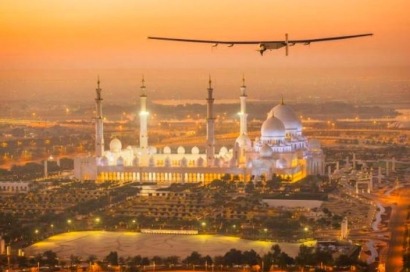
Borschberg and his aircraft, the Solar Impulse 2, took off from the Emirate's Al Bateen Executive Airport at dawn, and headed toward Muscat in Oman.
The entire journey is expected to cover 21,700 miles (35,000 kilometers.)
If all goes according to plan, over the next five months, the Solar Impulse 2 will stop at various cities around the globe, affording Borschberg an opportunity to evangelize about renewable energy while routine maintenance is performed on his craft.
"I am confident we have a very special airplane," Borschberg said shortly before climbing into the single seat plane.
The Solar Impulse 2 aircraft, a larger version of a single-seat prototype that first flew five years ago, has a wingspan of 236 feet (72 meters. Built into the wings are 17,248 ultra-efficient solar cells that transfer solar energy to four electrical motors that power the plane's propellers. The solar cells also recharge four lithium polymer batteries.
While many doubts about the viability of solar flight were doused by the Solar Impulse 1, the first iteration of the solar plan developed by Borschberg and his fellow Swiss, Bertrand Piccard, reporters seeing the pilot off this morning repeatedly raised questions about the current mission's biggest challenge -- crossing the Atlantic and Pacific Oceans.
"It will be a challenge," Borschberg said. "But we have the next two months, as we fly the legs to China, to train and prepare ourselves."
Monday's leg to Oman will cover about 248.5 miles (400 kilometers) and take about 12 hours, the solar impulse team said.
They expect to return to Abu Dhabi in late July or August.
For additional information:

